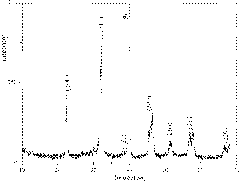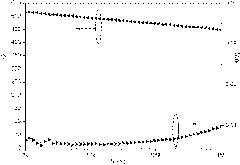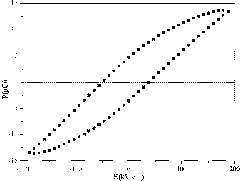Method for preparing barium zirconate titanate and potassium-sodium niobate composite lead-free piezoelectric thick film
A technology of potassium sodium niobate and barium zirconate titanate is applied in the field of preparation of lead-free piezoelectric thick film, which can solve the problems of difficulty in preparing dense and good potassium sodium niobate ceramic body and the like
- Summary
- Abstract
- Description
- Claims
- Application Information
AI Technical Summary
Problems solved by technology
Method used
Image
Examples
Embodiment 1
[0030] (1), according to BaZr 0.5 Ti 0.95 o 3 The stoichiometric ratio of barium acetate is dissolved in glacial acetic acid, stirred by constant magnetic force at 80°C for 30 minutes, and then naturally cooled to room temperature to obtain a barium acetate solution; tetra-n-butyl titanate and acetylacetone with a molar ratio of 1:2 Dissolve in ethylene glycol methyl ether, stir magnetically at room temperature for 40 minutes, then add zirconium tetra-n-butoxide, stir magnetically at room temperature for 40 minutes to obtain a mixed solution, then add barium acetate solution, stir magnetically at 80°C for 1 hour, After cooling naturally to room temperature, a clear barium zirconate titanate precursor sol was finally obtained, and the concentration of the barium zirconate titanate was adjusted to 0.4 mol / L.
[0031] (2), according to K 0.5 Na 0.5 NbO 3 Potassium carbonate, sodium carbonate and niobium pentoxide were weighed respectively, mixed and ball-milled with absolute...
Embodiment 2
[0036] (1), according to BaZr 0.5 Ti 0.95 o 3 The stoichiometric ratio of barium acetate is dissolved in glacial acetic acid, stirred by constant temperature at 80°C for 30 minutes, and then naturally cooled to room temperature to obtain a barium acetate solution; tetra-n-butyl titanate and acetylacetone with a molar ratio of 1:2 Dissolve in ethylene glycol methyl ether, stir magnetically at room temperature for 40 minutes, then add zirconium tetra-n-butoxide, stir magnetically at room temperature for 40 minutes to obtain a mixed solution, then add barium acetate solution, stir magnetically at 80°C for 1 hour, After cooling naturally to room temperature, a clear barium zirconate titanate precursor sol was finally obtained, and the concentration of the barium zirconate titanate was adjusted to 0.4 mol / L.
[0037] (2), according to K 0.5 Na 0.5 NbO 3 Potassium carbonate, sodium carbonate and niobium pentoxide were weighed respectively, mixed and ball-milled with absolute et...
Embodiment 3
[0042] (1), according to BaZr 0.5 Ti 0.95 o 3 The stoichiometric ratio of barium acetate is dissolved in glacial acetic acid, stirred by constant magnetic force at 80°C for 30 minutes, and then naturally cooled to room temperature to obtain a barium acetate solution; tetra-n-butyl titanate and acetylacetone with a molar ratio of 1:2 Dissolve in ethylene glycol methyl ether, stir magnetically at room temperature for 40 minutes, then add zirconium tetra-n-butoxide, stir magnetically at room temperature for 40 minutes to obtain a mixed solution, then add barium acetate solution, stir magnetically at 80°C for 1 hour, After cooling naturally to room temperature, a clear barium zirconate titanate precursor sol was finally obtained, and the concentration of the barium zirconate titanate was adjusted to 0.4 mol / L.
[0043] (2), according to K 0.5 Na 0.5 NbO 3 Potassium carbonate, sodium carbonate and niobium pentoxide were weighed respectively, mixed and ball-milled with absolute...
PUM
| Property | Measurement | Unit |
|---|---|---|
| Coercive field | aaaaa | aaaaa |
| Remanent polarization | aaaaa | aaaaa |
| Coercive field | aaaaa | aaaaa |
Abstract
Description
Claims
Application Information
 Login to View More
Login to View More - R&D
- Intellectual Property
- Life Sciences
- Materials
- Tech Scout
- Unparalleled Data Quality
- Higher Quality Content
- 60% Fewer Hallucinations
Browse by: Latest US Patents, China's latest patents, Technical Efficacy Thesaurus, Application Domain, Technology Topic, Popular Technical Reports.
© 2025 PatSnap. All rights reserved.Legal|Privacy policy|Modern Slavery Act Transparency Statement|Sitemap|About US| Contact US: help@patsnap.com



